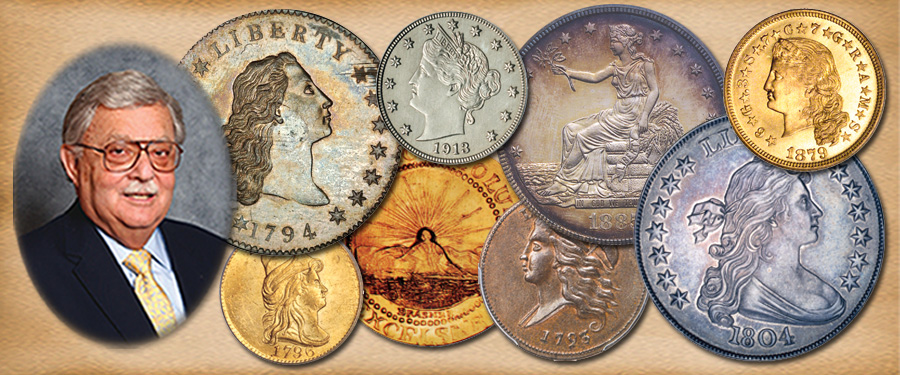
In this article I will continue to discuss how the rarity of Morgan silver dollars was affected by changes in supply and availability. This story is of a hoard of mostly Morgan silver dollars that was discovered in the estate of Lavere Redfield, of Reno, Nevada, who died in 1976.
Lavere Redfield started out as a potato farmer, bought and sold land, became wealthy and moved to Reno in the heart of the silver mining area of the American West. It seems that besides his accumulated wealth – in excess of $100 million – he apparently did not trust currency or banks, and purchased at face value silver dollars in $1,000 sacks. He would cart them home in his out-dated truck. Many bags were found under the floorboards of his cabin-like home, and also in the rear of his faithful truck. Altogether he accumulated 400 bags with a face value of $400,000. He kept them in his home as a personal store of wealth.
After he died, with the value of silver dollars increased due to the rise in the price of silver, the hoard was sold at auction for $7,300,000, an astounding price at the time. The coins became known as the Redfield Hoard. About 15% were said to be circulated and the largest amount were dollars of the San Francisco Mint, primarily in Mint State. Most were of the Morgan design, but there also were Peace dollars in the hoard.
A group of dealers banded together to make the purchase, and they then offered them in special plastic holders, each marked The Lavere Redfield Collection and marketed them throughout the country for many years.
No full inventory has ever been published, to my knowledge, but the availability of these coins had an immense effect on the silver dollar market at that time. Similar to the Treasury releases of silver dollars, the dispersal of this hoard and the publicity that accompanied it attracted new collectors to the field increasing demand. The fact that the hoard was marketed with care and not “dumped” on collectors kept the prices relatively stable. Also, the ongoing rise of silver prices up to 1981 gave extra support to the prices that were charged and helped maintain the value of the coins. As the Hunts manipulated silver prices, others accumulated silver dollars, including those from the Redfield Hoard, as a store of value.
But many of the coins went to collectors, and eventually, quite a few of the Redfield silver dollars were broken out of their special holders and sent to the grading services. In turn the grading services graded them and put them back in holders. In many cases high grades increased the value of the silver dollars.
So as you see, these hoards of silver dollars at the Mint and in Reno, may have affected the rarity of certain dates and mintmarks, but over time did not negatively affect the overall desirability of Morgan and other silver dollars. A temporary drop in price can be overcome later by the stimulus a hoard provides in the market. For a growing number of collectors, finding many silver dollar dates and mintmarks at relatively reasonable prices created a new rage for collecting these coins. The slow and deliberate distribution, accompanied by effective marketing, attracted attention and encouraged many to collect.





